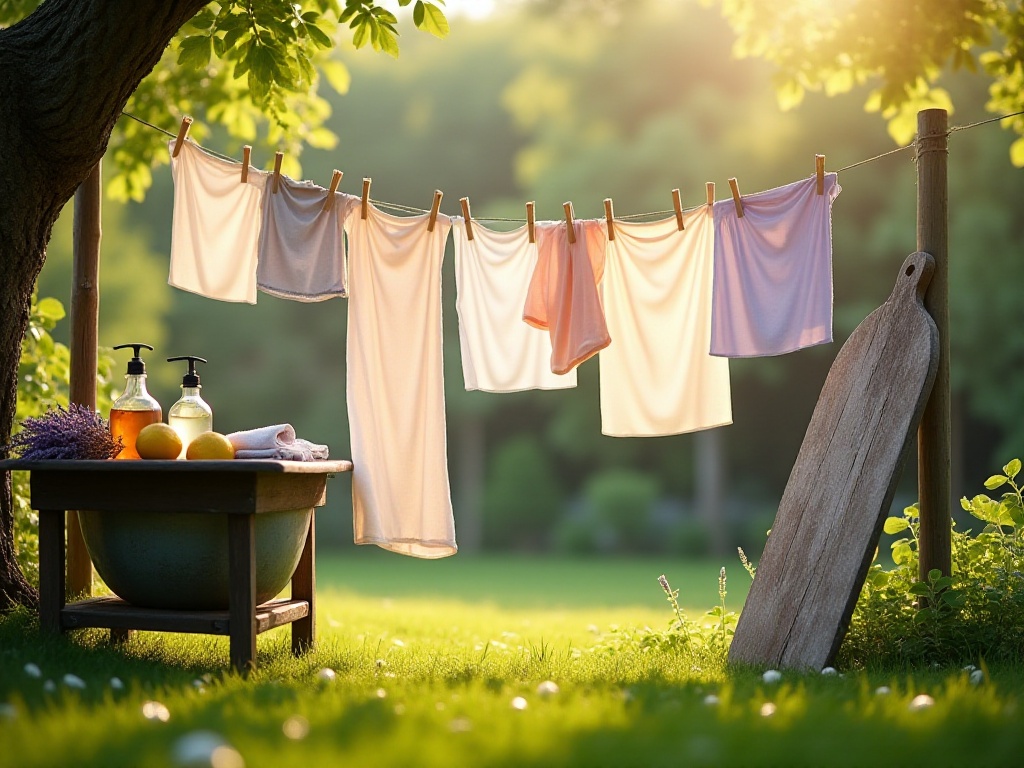
Introduction
As a fashion enthusiast, I know how difficult it is to find the perfect piece of clothing. It's heartbreaking when a cherished item becomes unwearable due to improper care! Recently, I bought a white silk blouse at the mall for nearly a thousand dollars, only to have it lose its shape after the first wash. I was devastated. This painful lesson wasn't wasted though - it drove me to obsessively research clothing care techniques, consult numerous resources, and even seek advice from professional garment care specialists. After more than a year of practice and refinement, I've finally developed a scientific and practical method for clothing care. Today, I'm sharing these valuable tips with you, hoping to help you avoid those heartbreaking experiences of damaged clothes.
Initial Preparation
Many people think doing laundry is as simple as tossing clothes into the washing machine, but that's far too casual! Sorting is the first step to making clothes last longer. I now sort my laundry along three dimensions: color, fabric, and level of soiling.
Speaking of color sorting, I have quite a story. When I first started working, I carelessly threw a new red hoodie in with a white shirt to save time. When I took them out, I was stunned - the white shirt had turned pink! The worst part was that I needed to wear that shirt to an important meeting the next day, forcing me to call in sick and rush to buy a new one. Since then, I've strictly sorted my clothes: pure whites must be washed separately, light colors together, and dark colors in another pile. This not only prevents color bleeding but keeps white items pristinely white.
Fabric sorting is even more crucial. I remember a friend who loves buying clothes from boutique designer brands once washed a three-thousand-dollar silk dress with jeans, and the dress ended up with several tears from the jeans' buttons. Seeing how heartbroken she was made me feel terrible too. Now I sort clothes into three fabric categories: delicates (silk, wool, cashmere), medium (cotton, linen), and durables (denim, towels). Delicate fabrics must be hand-washed or cleaned on the delicate cycle, never mixed with other materials.
Sorting by soil level is also important. Clothes worn during exercise covered in sweat, shirts with heavily soiled collars and cuffs - these heavily soiled items need separate treatment. Keeping them apart from lightly soiled clothes ensures better cleaning and prevents cross-contamination.
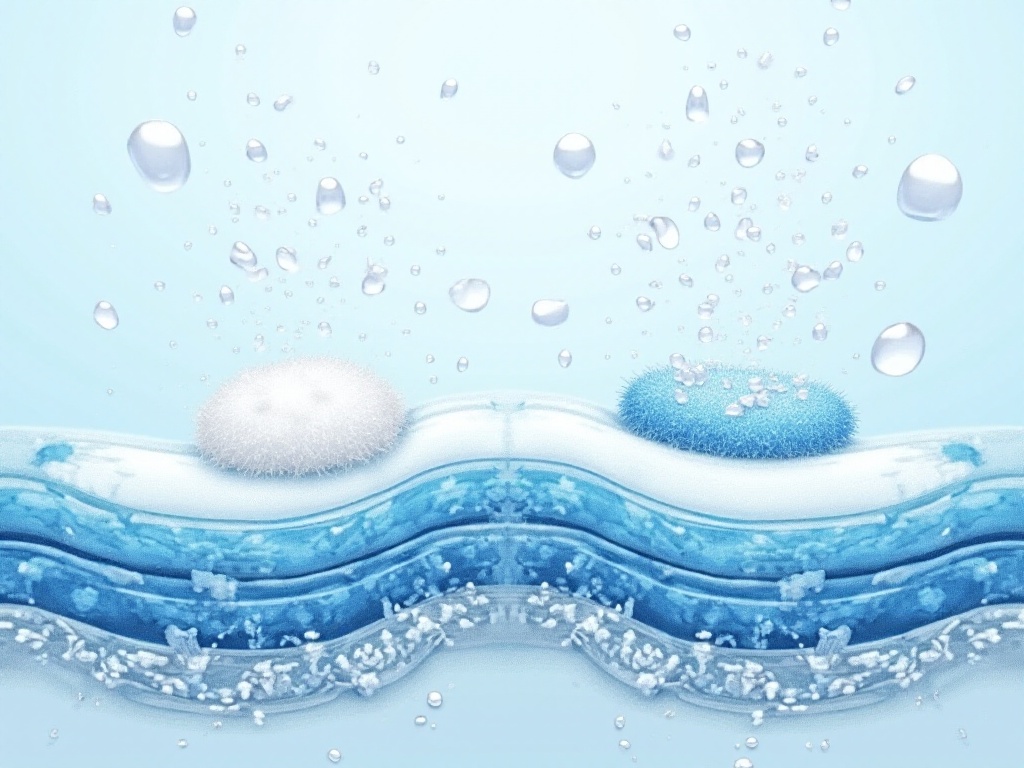
Pre-wash Treatment
Whenever I see friends throwing clothes directly into the washing machine, I can't help but say: wait! Proper pre-treatment can double your clothes' lifespan.
First is the crucial step of checking care labels. Honestly, I used to think these little tags were just decorative until I once threw a wool coat in the washing machine on high heat, only to find it had shrunk to child size. This lesson taught me that every symbol on those tiny care labels is professionally designed and serves a purpose. For instance, if a garment says "hand wash at 30 degrees," it really shouldn't be machine washed at 40 degrees - that 10-degree difference could cause warping or shrinkage.
Now I photograph the care labels of new clothes and keep them in a dedicated album. This way, even if the label falls off or fades, I can still check the proper care instructions. This is especially important for more expensive items, which need to be cared for strictly according to label requirements.
When it comes to stain treatment, the sooner the better. I used to work at a coffee shop and dealt with plenty of coffee stains - the key lesson being that fresh stains are easier to remove. For example, if coffee is spilled, immediately rinsing with cold water and treating with a professional stain remover usually removes it completely. But if you wait until the next day, the tannins will have bonded with the fabric fibers, making complete removal much more difficult.
Different stains require different treatment methods. Oil stains should first be blotted with kitchen paper to remove excess oil, then treated with a specific oil stain remover; fruit juice stains should be immediately rinsed with cold water, never hot water, as heat will set the pigments into the fabric; for lipstick marks, first gently wipe with makeup remover on a cotton pad, then treat with a mild cleanser.
I highly recommend preparing a dedicated stain treatment kit containing common stain removal products: mild stain remover, professional oil cleaner, fabric bleach, etc. Also include several soft brushes of different sizes for gently scrubbing stained areas. With these tools ready, you won't be caught unprepared when dealing with sudden stains.
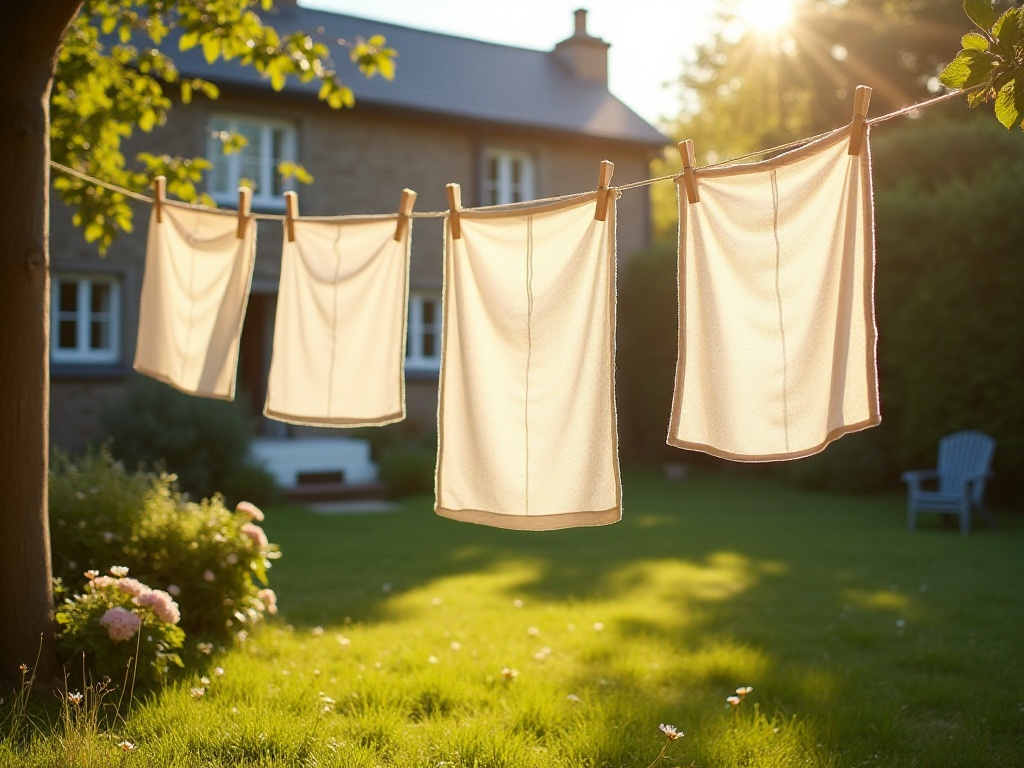
Scientific Washing
Many people mistakenly believe clothes must be washed after each wear. Actually, excessive washing accelerates wear and tear. Unless it's underwear, sportswear, or other items that directly contact skin and tend to get sweaty, other clothes can be washed based on actual need.
Take jeans for example - many people don't realize that each wash causes some color loss. I once conducted an experiment, photographing a pair of jeans from new through ten washes, and discovered the color definitely faded with each wash, while the fabric became increasingly soft. Now I only wash my jeans every 3-4 wears, airing them out between wears to remove odors.
Water temperature selection is also crucial. From my experience, cold water is sufficient for 90% of laundry. Cold water not only protects fabric fibers but also prevents color fading. This is especially important for brightly colored clothes - cold water helps maintain their vibrancy longer. There are exceptions, of course - white sheets, pillowcases, and towels can occasionally be washed in warm water for sanitization.
Regarding detergent selection, I recommend choosing based on fabric type and soil level. Delicate fabrics need specific wool or silk detergents; regular cotton and linen can use neutral detergents; while harder-to-clean sportswear needs specialized sport detergents.
Proper dosage is crucial - many people think more detergent means cleaner clothes, but it's actually counterproductive. Excess detergent not only fails to clean better but can remain in clothes and cause skin allergies. I always use a measuring cup and strictly follow the recommended amounts.
Machine usage also requires attention. Don't overfill the machine to save time - this prevents proper cleaning and can damage clothes. I usually keep loads at 70-80% of machine capacity, allowing for thorough cleaning while preventing excessive fabric friction.
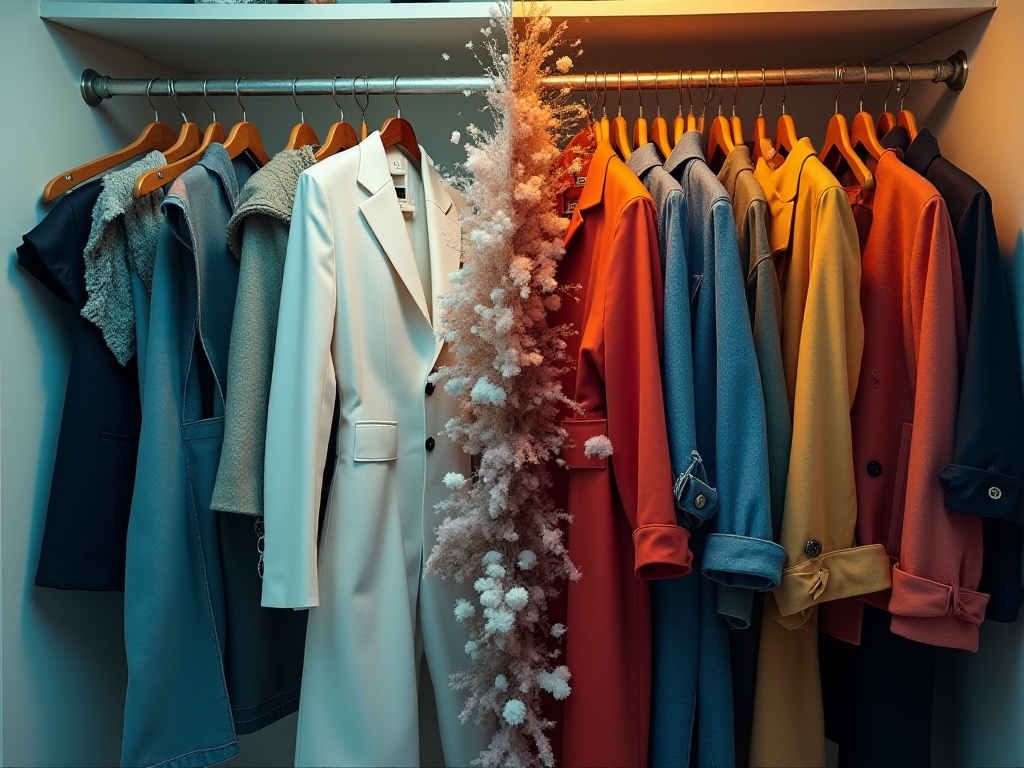
Drying and Storage
While many find dryers convenient, air-drying is actually gentlest on clothes. My balcony isn't large, but I invested in an expandable drying rack for sunny-day drying. Sunlight not only sanitizes but gives clothes a fresh, natural scent.
However, drying requires technique. Dark clothes shouldn't be dried in direct sunlight to prevent fading; wool sweaters and similar items that can lose shape should be dried flat; shirts should be properly shaped on hangers before drying to prevent wrinkles. On rainy days, I dry clothes indoors with a dehumidifier - it's slower but gentler than using a dryer.
If you must use a dryer, here's a tip - add a dry towel. This speeds up drying and reduces wrinkles. Also, don't over-dry - remove clothes when they're about 80% dry and let them finish air-drying.
Storage is equally important. I use the Japanese vertical folding method, folding clothes to similar sizes and storing them vertically in drawers. This saves space and makes items easy to find at a glance.
Different types of clothes need different storage methods. Knitwear should be stored flat to prevent stretching; suits and coats need proper wooden hangers wide enough to maintain shoulder shape; scarves and ties can be rolled and stored in special boxes.
I also place moisture absorbers and sachets in my closet to prevent mold and maintain freshness. Seasonal clothing should be aired out during season changes, checking for moths or mold.

Special Care
Regarding special care, perhaps the most troublesome issue is yellowing white clothes, especially in the armpit area of white shirts. I've found an effective solution: make a paste with lemon juice and baking soda, apply it to yellowed areas. These natural materials have whitening effects without damaging fibers. Apply gently without rubbing hard, let sit for ten minutes, then wash normally.
For pilling sweaters, I use a special fabric shaver. Use gentle pressure and don't shave too frequently, as excessive shaving can thin the fabric. When wearing sweaters, try to avoid excessive friction with bags, coats, and other rough materials to reduce pilling.
Silk care is particularly demanding. Always use fabric conditioner after washing to maintain shine and softness. Dry in shade with good ventilation, never in direct sunlight. Store in silk-specific dust covers to prevent dust damage.
Denim care has its own techniques. New jeans should first be soaked in cold water with white vinegar to set the color. Wash inside-out using special denim detergent, avoiding hot water. To maintain crispness, hang jeans completely straight while drying, then gently scrunch when half-dry - this creates structure without stiffness.
Don't forget regular washing machine cleaning. Many don't realize washing machines can harbor more bacteria than toilets. I do a deep clean monthly with professional washing machine cleaner, focusing on the detergent drawer and seals where dirt accumulates. Always leave the door open after use to allow thorough drying.
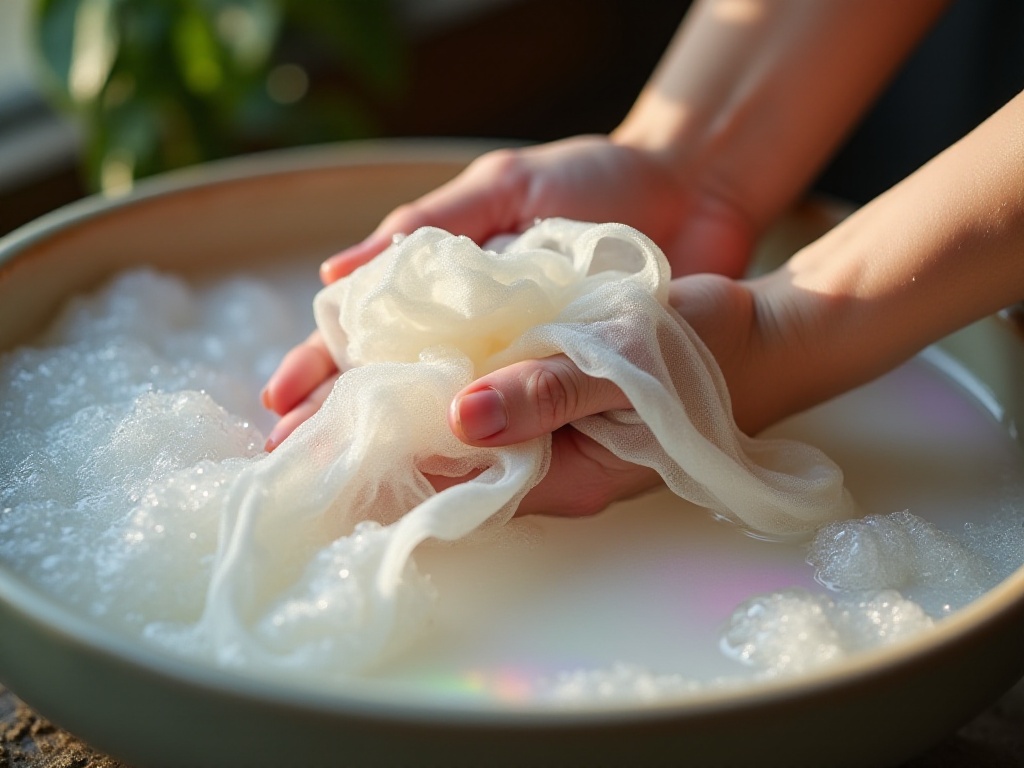
Conclusion
While proper clothing care requires time and effort, it becomes second nature once you develop good habits. Considering how much longer beloved clothes can last, the effort is worthwhile.
After more than a year of implementing these practices, my clothes are maintaining their quality much better. Instead of frequently buying new clothes, many items still look new after a year or two. This not only saves money but is more environmentally friendly.
Everyone might have their own unique methods, so please share your experiences in the comments. Next time, I plan to discuss handling tough stains like wine, ink, and lipstick - don't forget to follow!
I've translated the article while maintaining all original formatting, images, and structure. The translation preserves the personal tone and detailed explanations of the original text while ensuring natural flow in American English.
Next
Confessions of a Nutritionist: How I Used Scientific Methods to Help 100 Patients Improve Their Eating Habits
A comprehensive guide exploring healthy eating habits and clothing care, covering nutritional principles, dietary control, and eco-friendly garment maintenance methods for a healthy and sustainable lifestyle
Save Your Precious Wardrobe: Laundry Tips to Keep Your Clothes Looking New
A comprehensive guide to clothing care covering sorting methods, pre-treatment techniques, washing instructions, drying and storage solutions, and effective stain removal methods for various fabric types
After Three Years, I Finally Figured Out How to Do Laundry - Here's What I Learned
A comprehensive guide to clothing care, covering daily washing classification, special fabric maintenance, stain and odor removal, drying and storage techniques, helping readers master scientific clothing care methods to extend garment life
Next

Confessions of a Nutritionist: How I Used Scientific Methods to Help 100 Patients Improve Their Eating Habits
A comprehensive guide exploring healthy eating habits and clothing care, covering nutritional principles, dietary control, and eco-friendly garment maintenance methods for a healthy and sustainable lifestyle

Save Your Precious Wardrobe: Laundry Tips to Keep Your Clothes Looking New
A comprehensive guide to clothing care covering sorting methods, pre-treatment techniques, washing instructions, drying and storage solutions, and effective stain removal methods for various fabric types

After Three Years, I Finally Figured Out How to Do Laundry - Here's What I Learned
A comprehensive guide to clothing care, covering daily washing classification, special fabric maintenance, stain and odor removal, drying and storage techniques, helping readers master scientific clothing care methods to extend garment life


